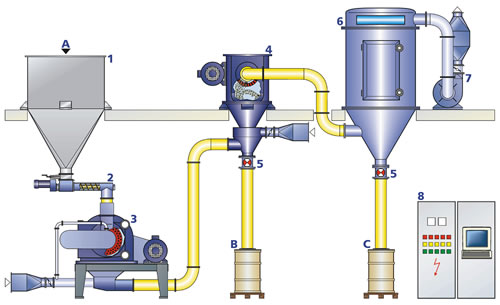 Wheat flour processing involves various stages. Before the wheat is processed, it must first have to be cleaned. Magnets are used to remove any metallic object, stones, and any other foreign materials that can be attracted by a magnet. Dust and chuffs in the wheat is removed by passing the wheat through air currents. There is an advanced color sorter being used today that separates impurities from the wheat by difference in color. This therefore reduces the product’s overall waste and improves the quality of flour.
Wheat flour processing involves various stages. Before the wheat is processed, it must first have to be cleaned. Magnets are used to remove any metallic object, stones, and any other foreign materials that can be attracted by a magnet. Dust and chuffs in the wheat is removed by passing the wheat through air currents. There is an advanced color sorter being used today that separates impurities from the wheat by difference in color. This therefore reduces the product’s overall waste and improves the quality of flour.
The next step involved in wheat flour processing is conditioning. This is done by dampening the wheat with water until it reaches a desired moisture content level. After that, the wheat is milled. This involves blending of different types of wheat to produce specific flour. The milling process is the one responsible in giving wheat a different and unique taste and characteristics.
The objective of the whole process is to extract as much endosperm as possible from the wheat. This is achieved by passing the already cleaned wheat in a series of rollers that rotates at different speeds. The broken particles of wheat are then separated by passing them through different sieves arrangement. The endosperm particles are then passed in a series of smooth rollers for the final milling process into flour. The flour can then be packed and sold to retailers and even cosumers

